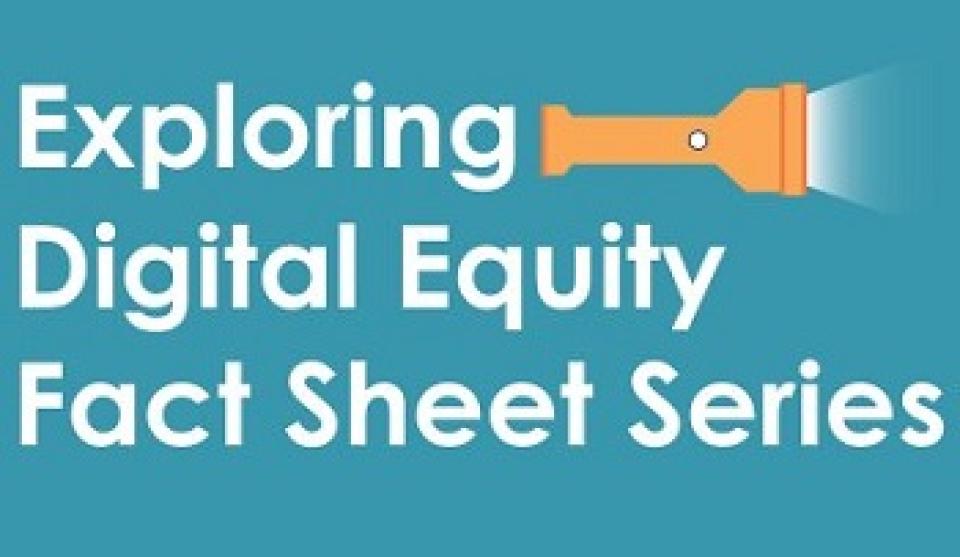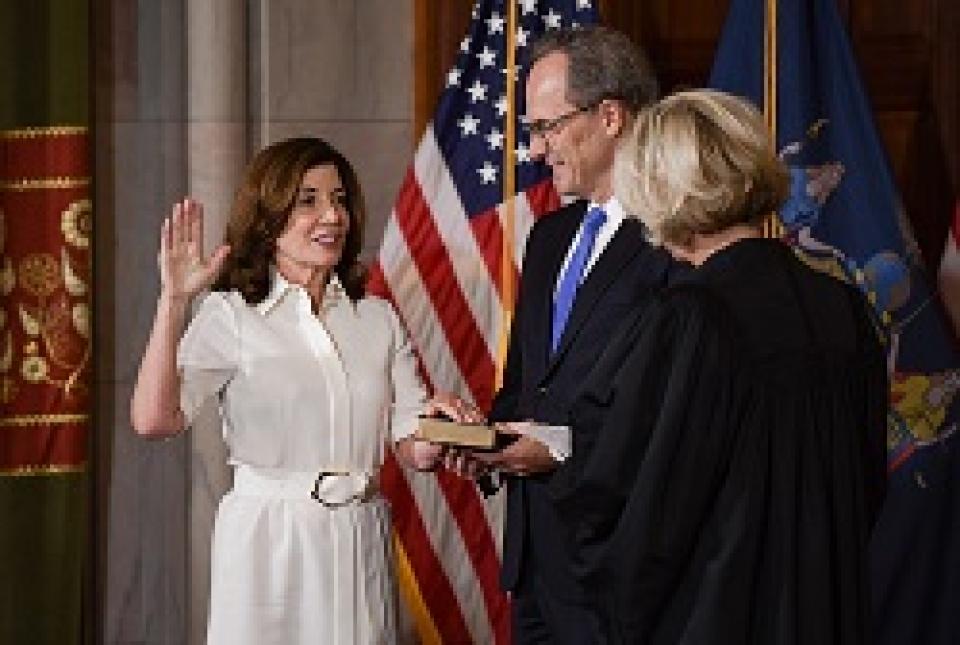
Fast, affordable Internet access for all.

Three years ago, the National Digital Inclusion Alliance (NDIA) ranked Cleveland as the worst-connected city in the United States (with more than 100,000 households).
City leaders are now using its American Rescue Plan funds to make that dishonorable distinction a thing of the past with a plan to invest $20 million to get the “Comeback City’s” digital future rockin’ n rollin’.
Although the city (pop. 383,000), home to the Rock & Roll Hall of Fame, is currently underserved by AT&T, Charter Spectrum, and T-Mobile, earlier this summer the city issued a Request for Proposals (RFP) that “seeks one or more partners” to help bridge Cleveland’s digital divide following a two-phased approach that first addresses the city’s immediate needs before tackling its longer-term strategic goals.
More specifically, the RFP details “the Phase I goals: ensuring that individuals who do not engage online can become full Internet users as quickly as possible, relying on digital adoption and affordable access strategies. (While) the Phase II goals (envision) —ubiquitous fiber optic connections and Smart City deployments.”
Or, as Cleveland Mayor Justin Bibb told Cleveland.com:
The first phase is on making sure on the short-term basis we connect as many families as we can to high-speed broadband, and the second phase will consist of making sure we lay fiber all across the city so we can be competitive, not just five years from now, but 20, 30 years from now, as a city and as a region.
Technically, the RFP that was issued is to fully implement the first phase of the city’s vision and set the table for the second phase. Work beyond the $20 million the city has set aside would require the issuance of a second RFP.
The window to request an unprecedented amount of federal funds to support state broadband grant programs is now open for business.
On Friday the 13th, the U.S. Commerce Department’s National Telecommunications and Information Administration (NTIA) officially announced the Notice of Funding Opportunity (NOFO) for the $42.5 billion Broadband Equity Access & Deployment (BEAD) program.
The BEAD program, which is part of the Infrastructure Investment and Jobs Act (IIJA) that was passed in November 2021, represents the single largest federal investment in broadband expansion in U.S. history. The program, according to NTIA’s own definition, is designed to allocate the funds to all 50 states (U.S. territories and Tribal governments) to support “projects that help expand high-speed Internet access … (through) infrastructure deployment, mapping, and adoption. This includes planning and capacity-building in state offices. And it supports outreach and coordination with local communities.”
The Application Process Has Begun
We have documented and discussed the BEAD program on numerous occasions, which you can find here. But the big news that comes with the NOFO release are the application deadlines associated with it.
States have until July 18 to submit their Letter of Intent (LOI), a required first step for states to receive a minimum of $100 million in BEAD funds. (States will be allocated additional funding based on a formula that takes into account how many unserved households are in each state).
There is a long-term solution to the broadband affordability gap that can be found in America’s first gig city. Thanks to Chattanooga’s wildly successful municipal broadband network, EPB Fiber, and its partnership with The Enterprise Center and Hamilton County Schools, over 15,000 low-income students in 8,500 households in Hamilton County are already getting a decade of free high-speed Internet service at no cost through a program known as HCS EdConnect.
It was borne out of the community’s response to the pandemic as local leaders looked to leverage an existing community asset to allow students to participate in distance learning, enable educators to expand educational opportunities outside the classroom, and support parents in pursuing their own professional and personal goals.
It’s an example of the one of the many benefits of having a locally-controlled, publicly-owned broadband network in which the infrastructure is seen as a public good like roads or a water system. It’s an approach that sees broadband infrastructure as something that should be accessible to everyone in the community and not used as a tool to simply benefit those who can afford it.

We wanted to visually document the power that HCS EdConnect has had in transforming the lives of program participants by weaving together a compilation of video diaries that will give you a glimpse of how a visionary municipal network made this Tennessee county more resilient in the face of the pandemic and ensured no one in their community was left on the wrong side of the digital divide.
Big Telecom Band-Aid or Local Long-Term Solution?
The Biden Administration is poised to celebrate the nation's largest telecommunications monopolies today even as these companies do the bare minimum for digital equity while undermining his administration's broadband agenda.
Christopher Mitchell, Director of the Community Broadband Networks Program at the Institute for Local Self-Reliance, had this to say today about the undue influence of Big Telecom and its effort to block the confirmation of GiGi Sohn as an FCC commissioner:
As we enter the third year of a pandemic that has supposedly redefined the crucial importance of broadband, the Federal Communications Commission has failed to update the definition of broadband it set in 2015. Few expect the FCC to publish accurate maps of where broadband is until 2023. It might help if President Biden seated his third commissioner.
The Biden Administration took a painfully long time to nominate the most obvious candidate for the position - Gigi Sohn - and has done precious little to have her confirmed in a reasonable time frame. Though it would be easy to blame Republican opposition, the truth is that it simply does not appear to be a priority for the Administration.
We join the effort to praise all companies that are helping move toward digital equity, but if simply discounting the cost of service from cable and telephone providers were sufficient, we might have less of a problem now, 11 years after Comcast launched Internet Essentials. To actually connect everyone, we will need an effective FCC as well as local engagement. However, some of the very companies being praised by the President today are spending millions in lobbying and ad-blitzes to prevent Gigi Sohn from being confirmed and to stop needed investments.
If they succeed in blocking Gigi, they will have confirmed something else: that they are the actual regulator of telecom services and the Biden Administration is not serious about the lofty goals it set in 2021.
What is digital equity? And why is access to ubiquitous, reliable and affordable high-speed Internet service so vital? The technological issues involved can sometimes seem confusing, especially for those who came of age before the Internet fundamentally transformed how we interact.
That’s why the Institute for Local Self Reliance, with support from AARP, has created the Exploring Digital Equity Fact Sheet Series. The series contains six user-friendly, easy-to-understand fact sheets to help demystify the challenges associated with creating digital equity.
We are releasing the entire series today, while AARP will feature the fact sheets as part of its Livable Communities initiative, an effort to support neighborhoods, towns, cities and rural areas in creating safe, walkable streets; age-friendly housing and transportation options; access to needed services; and opportunities for residents of all ages to participate in community life.
Both ILSR and AARP have created landing pages for the fact sheets as well. You can find our landing page here, and the fact sheet landing page for AARP here.

The fact sheets series ultimately highlight how expanding Internet access to everyone who wants it isn’t an infrastructure problem alone. Achieving digital equity for everyone in a community is a multi-faceted endeavor, and requires engaging and activating an array of stakeholders. The Exploring Digital Equity Fact Sheet Series unpacks the issues, challenges, and opportunities today.
Two decades into the twenty-first century, it still feels a little strange to justify all of the obvious ways that Internet access serves as a key pillar among the social determinants of health (SDOH) that govern our individual and collective wellbeing. The concept itself is at least two hundred years old: a German pathologist named Rudolph Virchow is often quoted as saying in the late 1840s, in response to the privation he saw in the run-up to the 1848 revolutions, that “medicine is a social science and politics is nothing else but medicine on a large scale.”
Our modern framing of the problem comes in large part from the World Health Organization, which in the preamble to its 1946 constitution wrote that “health is a state of complete physical, mental and social well-being and not merely the absence of disease or infirmity.” In 2020, the FCC has called broadband access a “super social determinant of health” in 2020, precisely because it serves as a gateway to all of the other elements of life that foster healthiness and wellbeing, from access to education, information, better food, economic opportunity, and socialization.
But a recent study published to the JAMA Open Network makes the connection even more explicit. In it, a team of researchers at The Center for Spatial Data Science at the University of Chicago show that a lack of Internet access has been strongly correlated with higher Covid-19 mortality rates across every type of household and in rural, suburban, and urban areas alike.
Internet Access Most Strongly Correlated with Covid-19 Mortality Rates
Written by Christine Parker and Ry Marcattilo-McCracken
A recent report by BroadbandNow made the rounds in February, with the authors concluding that the average price for broadband access across all major speed tiers for Americans has fallen, by an average of 31 percent or nearly $34/month, since 2016. At a glance, this is great news – perhaps affordable Internet access for all is within reach?
Readers following up to check out the report itself would be well justified in coming to the same conclusion, with BroadbandNow writing in the first paragraph that “we’ve found that prices have decreased across all major download speeds (25Mbps up to 1Gbps+) and technologies (cable, fiber, DSL and fixed wireless).” Immediate news coverage reinforced the report’s points.
But you don’t have to follow broadband policy closely to get the sense that something a little off is going on here. It feels like every day there’s a story like this one about Cable One, with a provider increasing speeds as it improves its network infrastructure and then raising rates while removing the slowest tier options. Charter and Comcast, for their part, do this nearly every year whether pairing it with speed increases or not. Is broadband access getting cheaper, or more expensive? What’s going on here?
The reality is that this report from BroadbandNow, unfortunately, poorly frames the national broadband marketplace. At best, it muddies the waters with a lack of clarity about the relationship between broadband access speed tiers and relative pricing. At worst, it leaves the average reader with the incorrect assumption that broadband prices must be falling, and gives the monopoly cable and telephone companies ammunition to push for millions more in taxpayer dollars while building as little new infrastructure as possible.
Community broadband advocates in New York rang in the new year celebrating Gov. Kathy Hochul’s announcement of a proposed $1 billion investment to beef up broadband in the Empire State. If state lawmakers move to enact the initiative, it would be what the Governor’s office describes as “the largest ever investment in New York's 21st century infrastructure.”
During her State of the State speech, Gov. Hochul unveiled the ConnectAll Initiative, which aims to “deliver affordable broadband to millions of New Yorkers and transform the state's digital infrastructure through new investments,” with municipal broadband as a centerpiece of the plan.
In announcing the new initiative – which would be funded with a combination of up to $300 million in state funds, $345 million in federal funds, with the rest to eventually come from the recently passed Infrastructure Investment and Jobs Act – Gov. Hochul said:
The pandemic exposed how without broadband Internet, New Yorkers can be disconnected from school, work, and families. The ConnectALL Initiative will empower local municipalities and state agencies to set up nation-leading broadband infrastructure statewide, ensuring that every New Yorker has access to the Internet when they need it.
Six-Part Strategy

The plan not only creates a new ConnectALL Office, it directs the office to work in conjunction with other state agencies in overseeing the major components of the effort, following a six-part strategy that includes:
Communities across the United States got an unexpected gift from the Biden Administration last week in the form of additional flexibility to use Rescue Plan funds for needed broadband investments, particularly those focused on low-income neighborhoods in urban areas.
When Congress developed and passed the American Rescue Plan Act, it tasked the Treasury Department with writing the rules for some key programs, including the State & Local Fiscal Recovery Funds (SLFRF). That program is distributing $350 billion to local and state governments, which can use it for a variety of purposes that include broadband infrastructure and digital inclusion efforts.
Treasury released an Interim Final Rule in May, 2021, detailing how local governments would be allowed to invest in broadband. I promptly freaked out, at the restrictions and complications that I (and others) feared would result in local governments backing away from needed broadband investments due to fears of being out of compliance with the rule.
After we worked with numerous local leaders and the National League of Cities to explain the problems we saw in the proposed rule, Treasury released updated guidance in the form of a Q&A document to explain how local governments would be able to build and partner for needed networks.
Given the many challenges the Biden Administration has had to deal with, we did not expect significant new changes to the Rescue Plan rules around the SLFRF. But after many months of deliberations, the Treasury Department has resolved all of the concerns that we identified as areas of concern in May.
As we explain below, local governments have wide latitude to use SLFRF funds for a variety of needed broadband infrastructure investments, especially to resolve affordability challenges.
Summary and TL;DR
The rest of this post will cover some key points in the Final Rule with references to the text in the hopes that it will help communities better understand their options and share key passages with their advisers and attorneys.
While a national debate rages over immigration and the border wall, just 30 miles north of the U.S.-Mexico border, Harlingen city officials are coming together to plan the building of a bridge – across the digital divide deep in the heart of the Rio Grande Valley.
When Harlingen (pop. 75,000) was founded at the turn of the 20th century, it established itself as a prominent commerce and transportation hub – the “Capital of the Rio Grande Valley” at “the crossroads of South Texas.” Over the years, thanks to its fertile delta soil, the cultivation of citrus fruit, grain, and cotton became a major part of the local economy. Today, however, the biggest industry in the second most populous city in Cameron County is healthcare.
As attractive as Harlingen has become to residents and visitors – with its extensive park system and tropical bird-watcher’s paradise (the city happens to be located where two primary avian flyways converge) – one thing the city lacks is adequate access to broadband, which is particularly acute among households with school-aged children.
Pandemic Spurs City into Action
That realization was the impetus behind a recent city commission vote to move forward with a feasibility study to determine how the city might build a broadband network and whether it should rely on fiber, fixed wireless, or a mix of deployment technologies to modernize Harlingen’s telecommunications infrastructure.
“What brought this to our attention was of course the pandemic,” City Manager Gabriel Gonzalez told Valley Central News. “When the school district had to go to virtual learning, we found out that there were students and some families that did not have access to (the) Internet.”